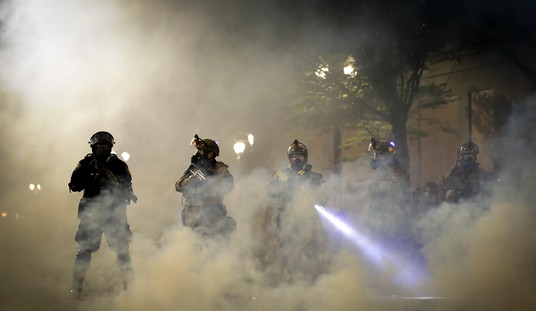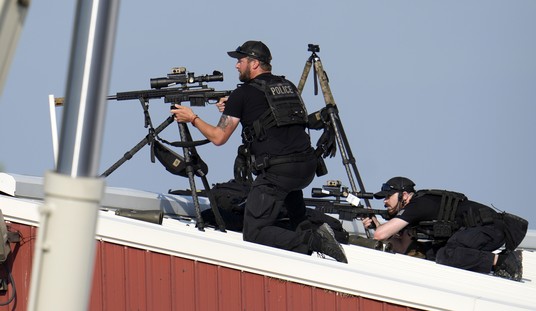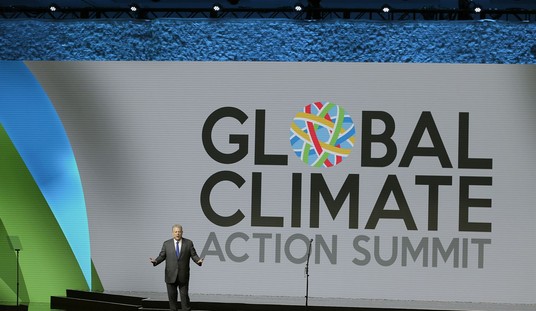The fifth installment of “The Twitter Files” has dropped, and as with the previous two chapters, it focused on the company’s decision to ban former President Donald Trump for supposedly inciting the Jan. 6, 2021, riot at the U.S. Capitol. This iteration provides a deeper dive into the behind-the-scenes chatter between Twitter’s employees and members of the company’s leadership in the leadup to Trump’s banning.
At the time, Twitter claimed it removed Trump ostensibly to prevent the further incitement of violence. But a closer look suggests the decision was motivated more by “Orange Man Bad” than a genuine concern for people’s safety.
In part of the thread, journalist Bari Weiss points to how the platform dealt with real calls to violence issued by heads of other countries, noting how Twitter did not take severe action in these cases. She recounted how the former Malaysian Prime Minister exhorted Muslims to “kill millions of French people without so much as a temporary suspension:
In October 2020, the former Malaysian Prime Minister said it was “a right” for Muslims to “kill millions of French people.”
Twitter deleted his tweet for “glorifying violence,” but he remains on the platform.
21. In October 2020, the former Malaysian Prime Minister said it was “a right” for Muslims to “kill millions of French people.”
Twitter deleted his tweet for “glorifying violence,” but he remains on the platform. The tweet below was taken from the Wayback Machine: pic.twitter.com/7tgxgCw9I9
— Bari Weiss (@bariweiss) December 12, 2022
The President of Nigeria used Twitter to encourage violent action against various pro-Biafra militant groups. Apparently, the company’s leadership did not believe his tweet warranted a ban or suspension:
Muhammadu Buhari, the President of Nigeria, incited violence against pro-Biafra groups.“Those of us in the fields for 30 months, who went through the war,” he wrote, “will treat them in the language they understand.”
Twitter deleted the tweet but didn’t ban Buhari.
22. Muhammadu Buhari, the President of Nigeria, incited violence against pro-Biafra groups.“Those of us in the fields for 30 months, who went through the war,” he wrote, “will treat them in the language they understand.”
Twitter deleted the tweet but didn't ban Buhari.
— Bari Weiss (@bariweiss) December 12, 2022
Even when a head of state threatened Twitter’s employees, they did not act:
In early February 2021, Prime Minister Narendra Modi’s government threatened to arrest Twitter employees in India, and to incarcerate them for up to seven years after they restored hundreds of accounts that had been critical of him.
Twitter did not ban Modi.
24. In early February 2021, Prime Minister Narendra Modi’s government threatened to arrest Twitter employees in India, and to incarcerate them for up to seven years after they restored hundreds of accounts that had been critical of him.
Twitter did not ban Modi. pic.twitter.com/s7dyDlNbaS
— Bari Weiss (@bariweiss) December 12, 2022
Nevertheless, the company decided that Trump’s tweets were dangerous enough to justify removing him from the platform. The content of the former president’s tweet hardly merited the decision to ban him. In the first post, he wrote:
The 75,000 great American Patriots who voted for me, AMERICA FIRST, and MAKE AMERICA GREAT AGAIN, will have a GIANT VOICE long into the future. They will not be disrespected or treated unfairly in any way, shape or form!!!”
In the next tweet, Trump informed users that he “will not be going to the Inauguration on January 20th.”
But after J6, “pressure grew, both inside and outside of Twitter, to ban Trump,” according to Weiss.
There were several Twitter employees who pushed back against the idea of banning the former president, including one who was from China. “Maybe because I am from China,” they wrote in a message on Slack, “I deeply understand how censorship can destroy the public conversation.”
But those arguing against the ban were “a distinct minority within the company,” while many other workers “were upset that Trump hadn’t been banned earlier.”
Members of Twitter’s staff who were tasked with assessing Trump’s tweets concluded that he had not violated the company’s terms of service. “I think we’d have a hard time saying this is incitement,” a staffer wrote. Another work concurred, noting that they “don’t see the incitement angle here.”
However, not even 90 minutes after the employees said there was no incitement, Vijaya Gadde, Twitter’s former Head of Legal, Policy, and Trust, asked if Trump’s tweets could be considered “coded incitement to further violence.”
26. Less than 90 minutes after Twitter employees had determined that Trump’s tweets were not in violation of Twitter policy, Vijaya Gadde—Twitter’s Head of Legal, Policy, and Trust—asked whether it could, in fact, be “coded incitement to further violence.” pic.twitter.com/llJRMfpOPi
— Bari Weiss (@bariweiss) December 12, 2022
In what seems to be an effort to shoehorn Trump’s tweets into a category of incitement, another employee suggested that his remarks could have violated the company’s Glorification of Violence policy if one “interpreted the phrase ‘American Patriots’ to refer to the rioters.”
27. A few minutes later, Twitter employees on the “scaled enforcement team” suggest that Trump’s tweet may have violated Twitter’s Glorification of Violence policy—if you interpreted the phrase “American Patriots” to refer to the rioters. pic.twitter.com/Wszq4zBqnW
— Bari Weiss (@bariweiss) December 12, 2022
Of course, there is no evidence that Trump was referring to those who engaged in violence at the Capitol.
The debate intensified, with some members viewing him “as the leader of a terrorist group responsible for violence/deaths comparable to Christchurch shooter or Hitler and on that basis and on the totality of his Tweets, he should be de-platformed.”
28. Things escalate from there.
Members of that team came to “view him as the leader of a terrorist group responsible for violence/deaths comparable to Christchurch shooter or Hitler and on that basis and on the totality of his Tweets, he should be de-platformed.” pic.twitter.com/QD4DvrUEhO
— Bari Weiss (@bariweiss) December 12, 2022
Indeed, some of these individuals went so far as to compare this situation to “Nazis following orders.”
Not long after, the company banned Trump under the guise of addressing “incitement to violence.”
The exchange between employees appears to show that Gadde and other members of the leadership were desperately looking for a justification to remove the former president from the platform. They twisted themselves into rhetorical pretzels to apply the “incitement” label to his remarks even when employees rightly pointed out that it did not fit.
At this point, there can be only one explanation for Twitter’s decision to ban Trump: It was a politically motivated endeavor designed to silence a leader they did not like. They had wanted him suppressed even before the Jan. 6 riot, and the violence gave them just the excuse they needed. It is in keeping with the overall censorship practices of the company.
Earlier iterations of the Twitter Files showed they had been throttling right-leaning views while refusing to apply their standards to left-wing influencers. It is difficult to imagine that these people truly believe Trump was promoting violence on the platform. Again, there is nothing surprising here, but in this most recent chapter, the nation now knows the internal machinations that took place in order for the company to remove the former president. Despite their constant protestations to the contrary, it is now abundantly clear that Twitter employees and leadership used their power to further a political agenda.













Join the conversation as a VIP Member